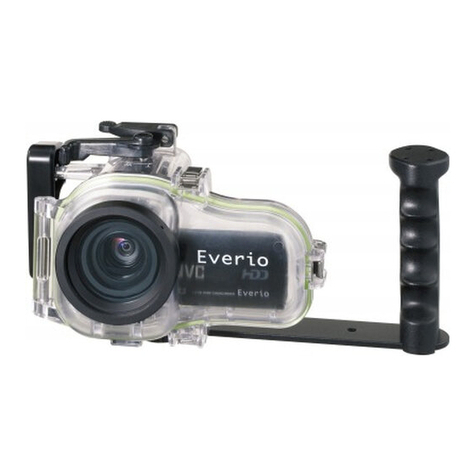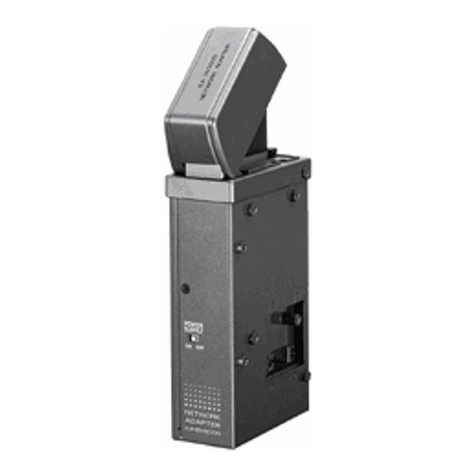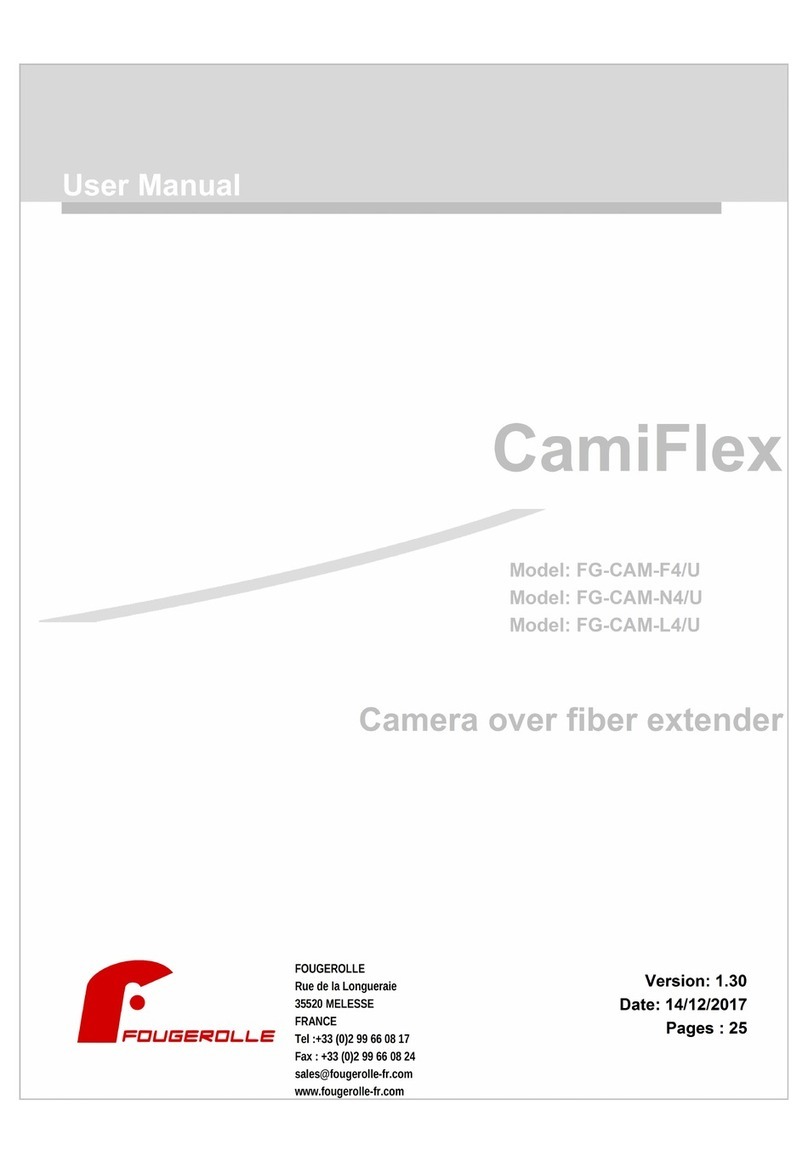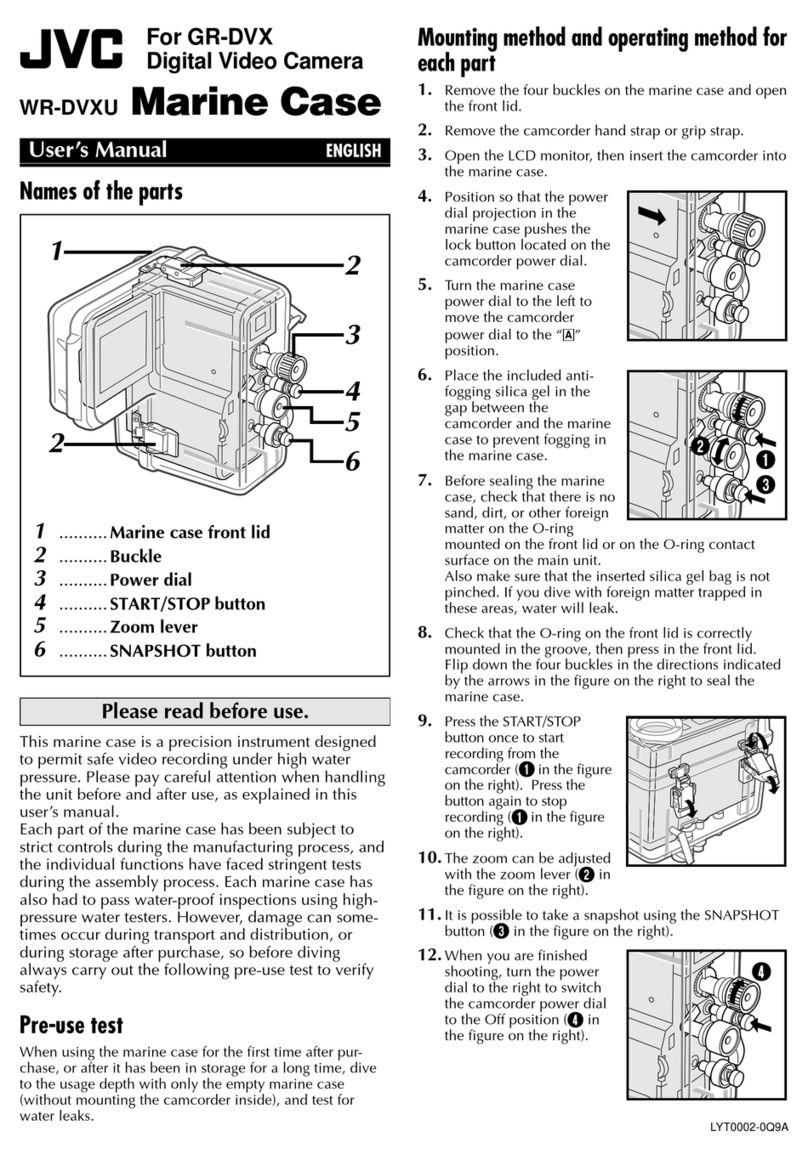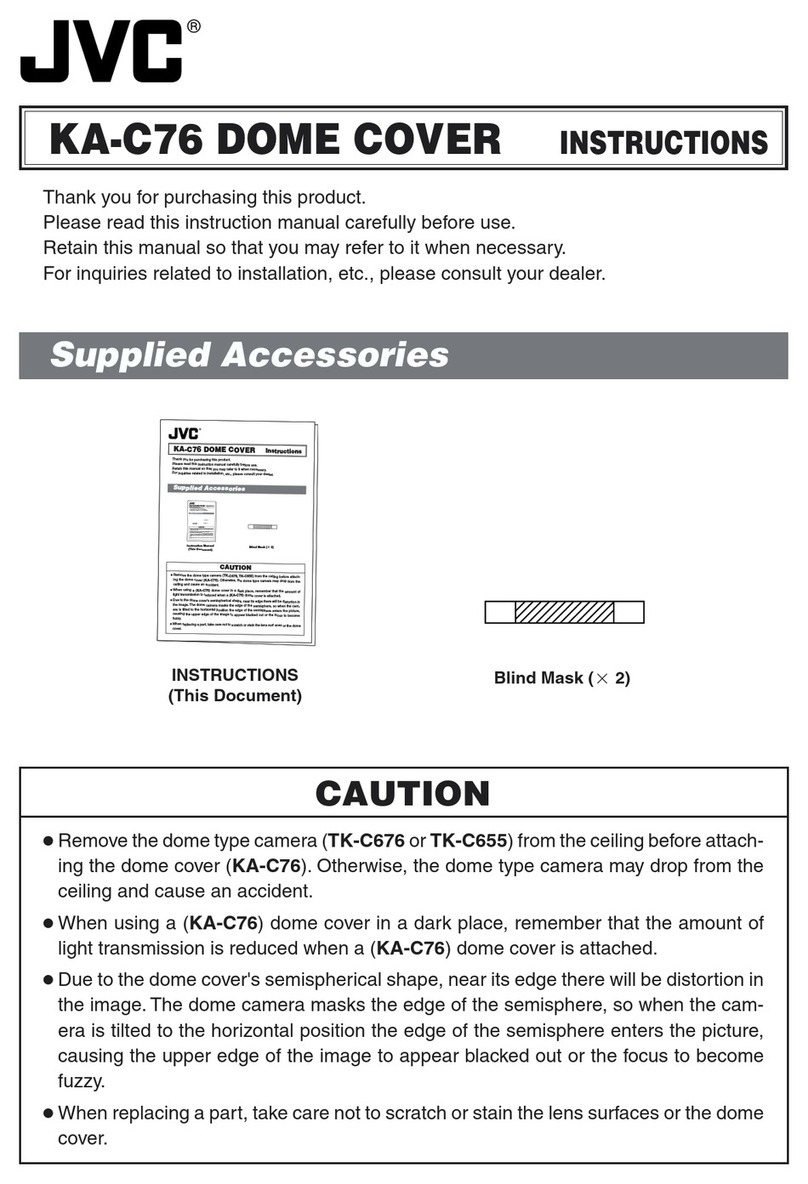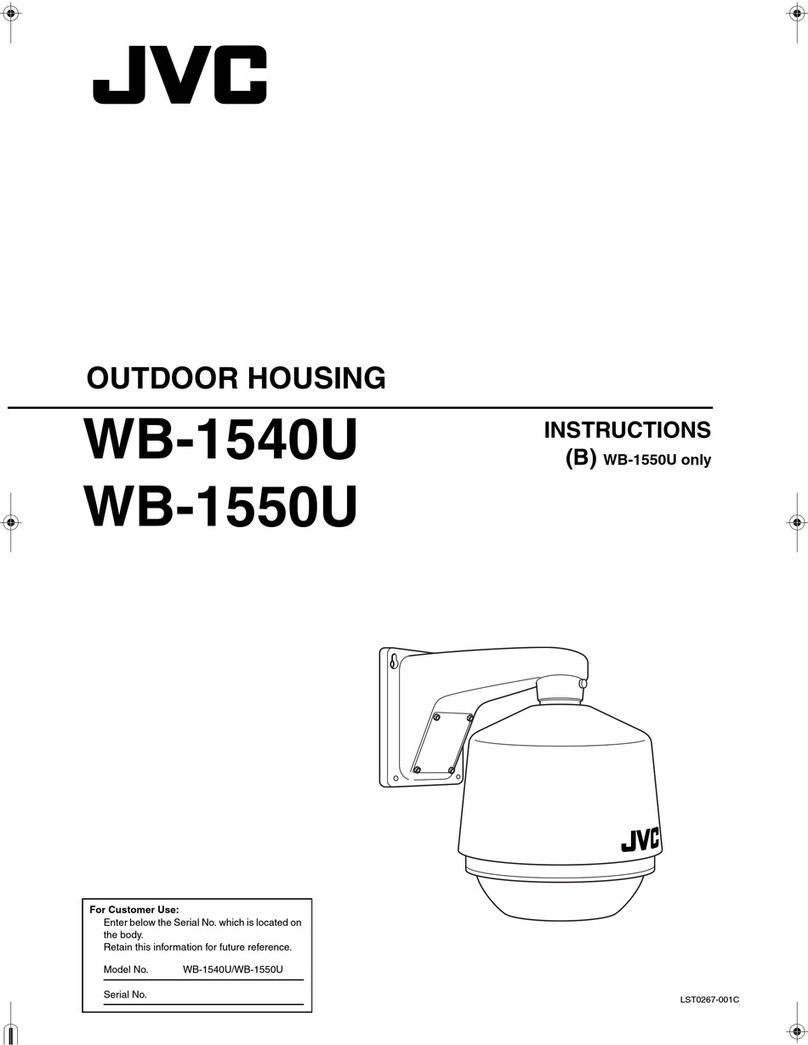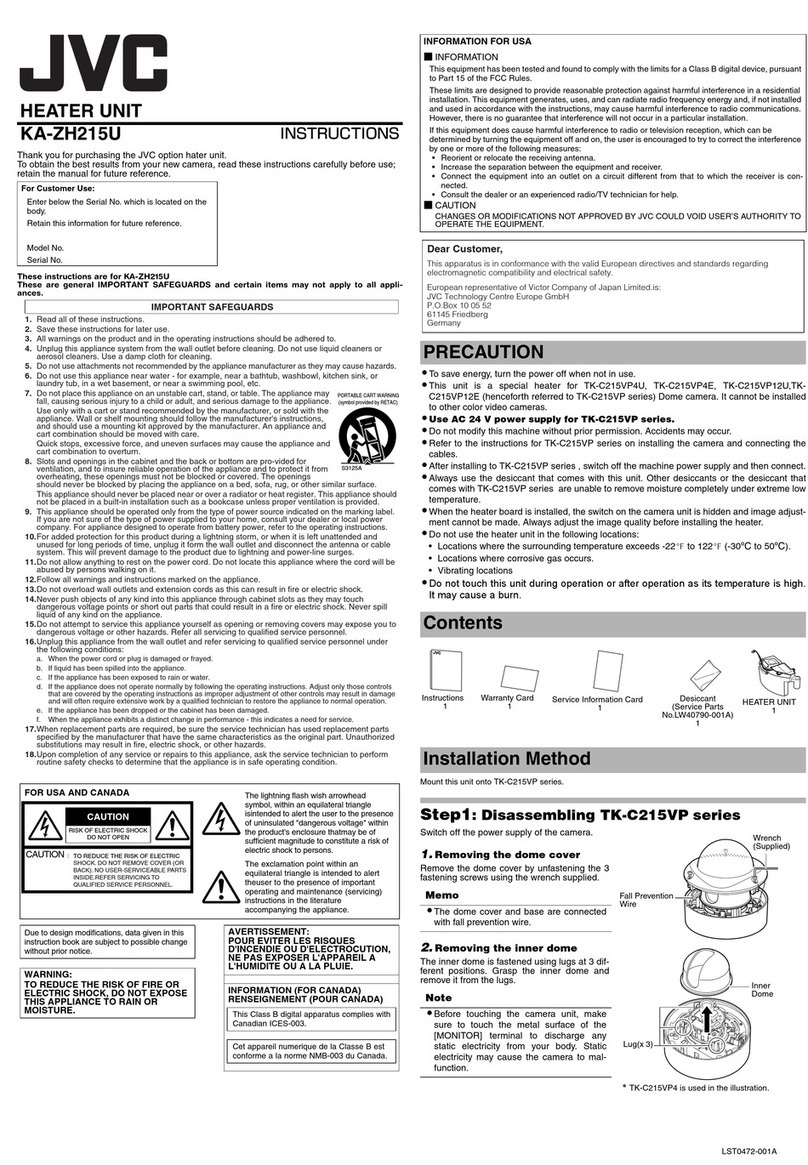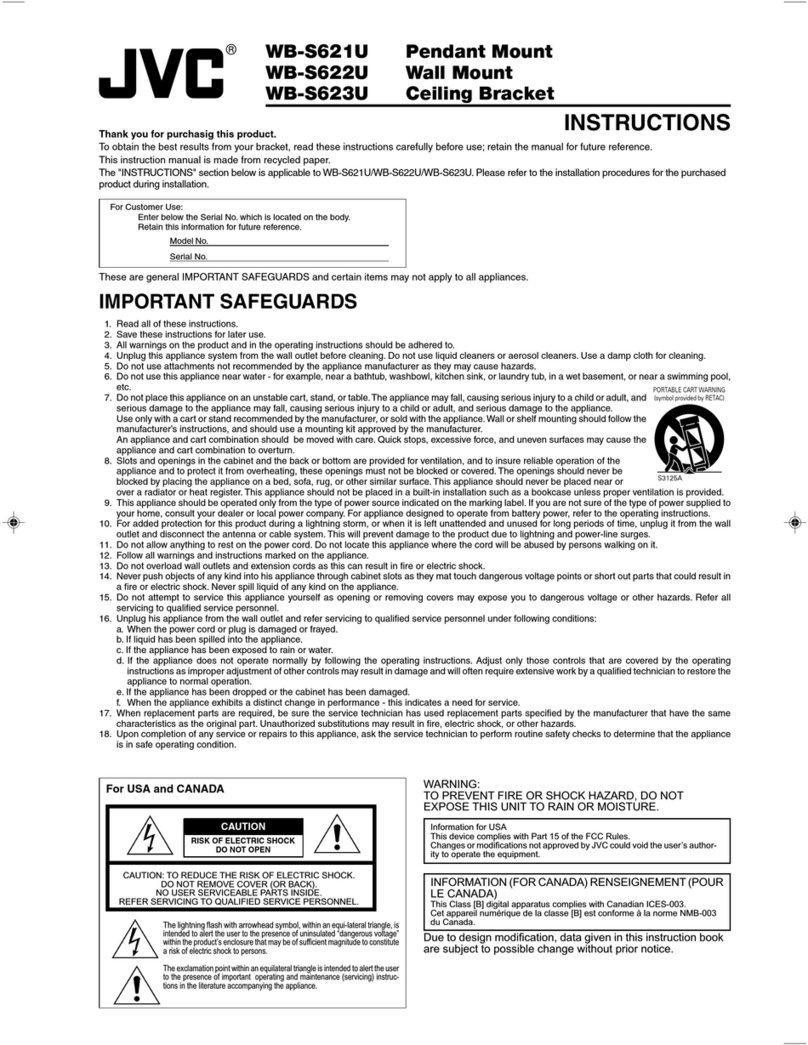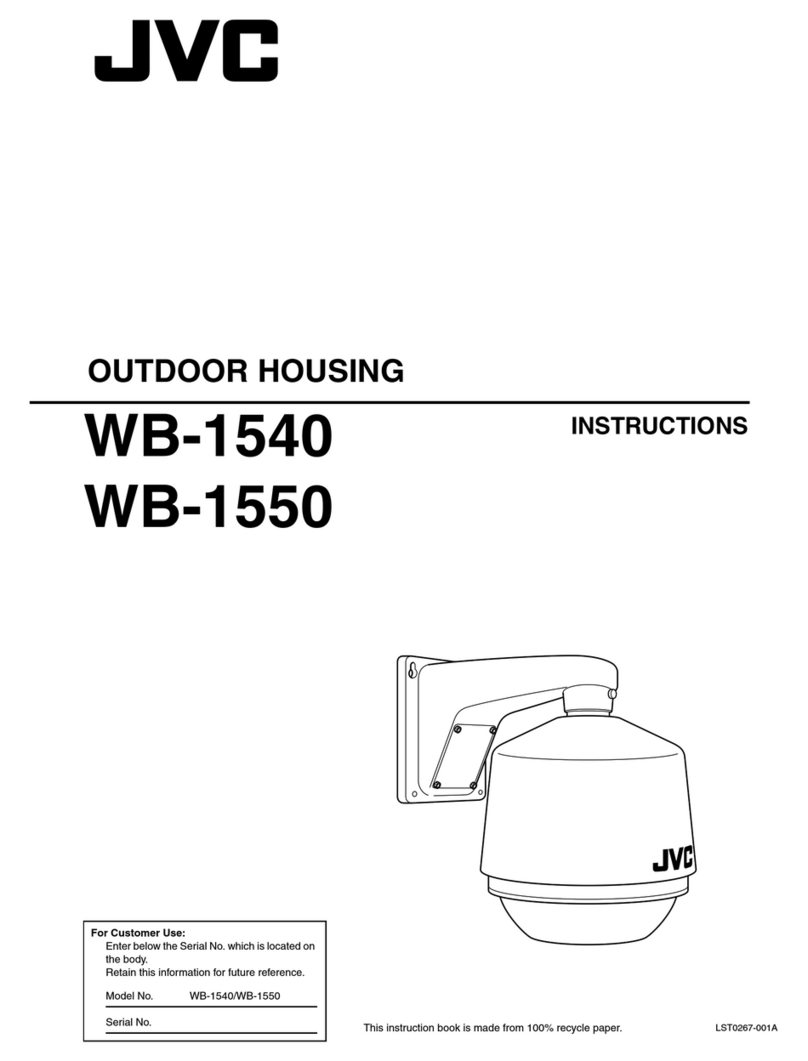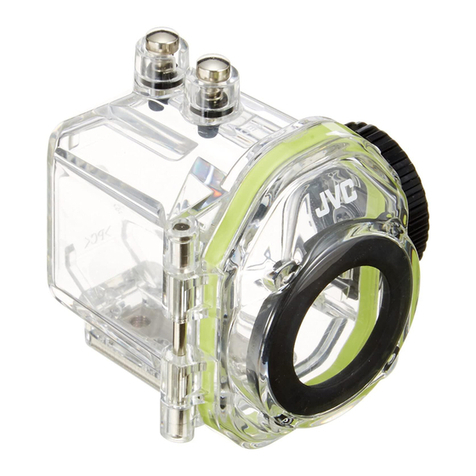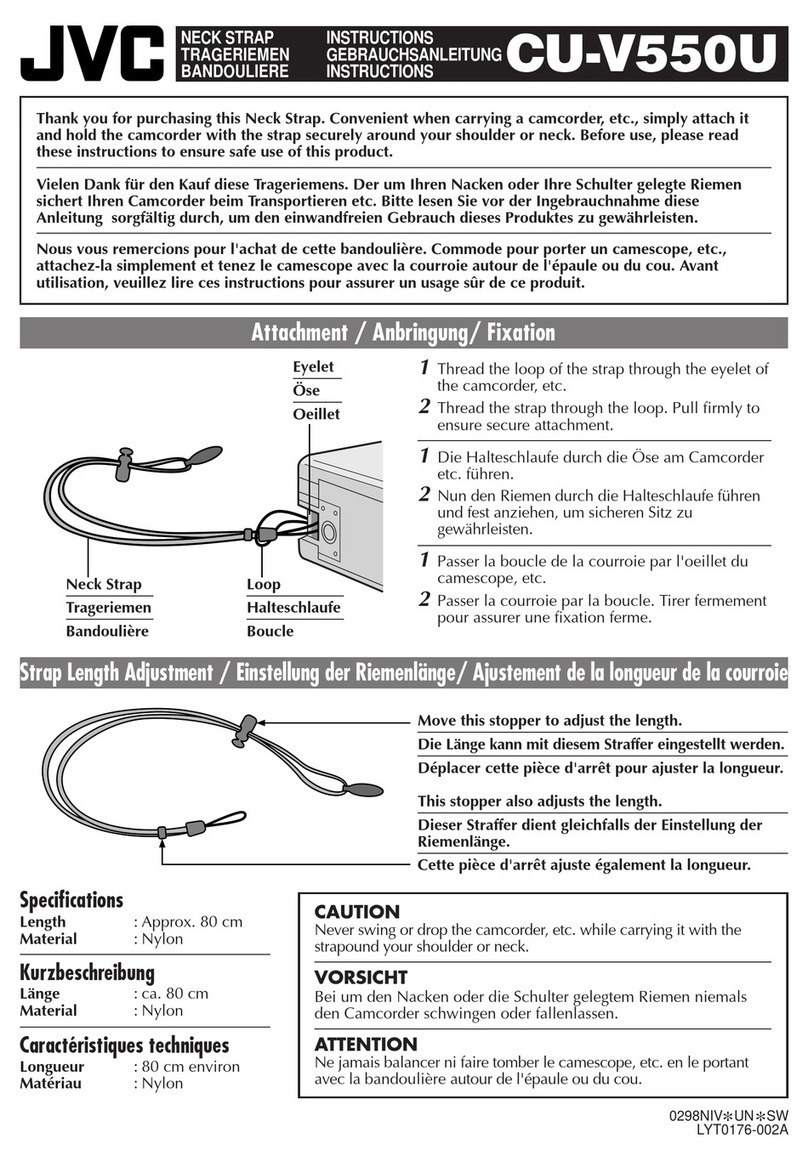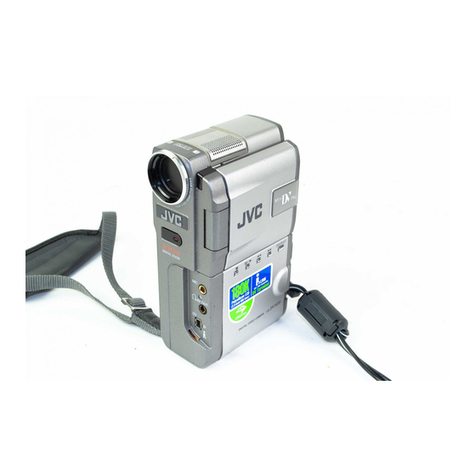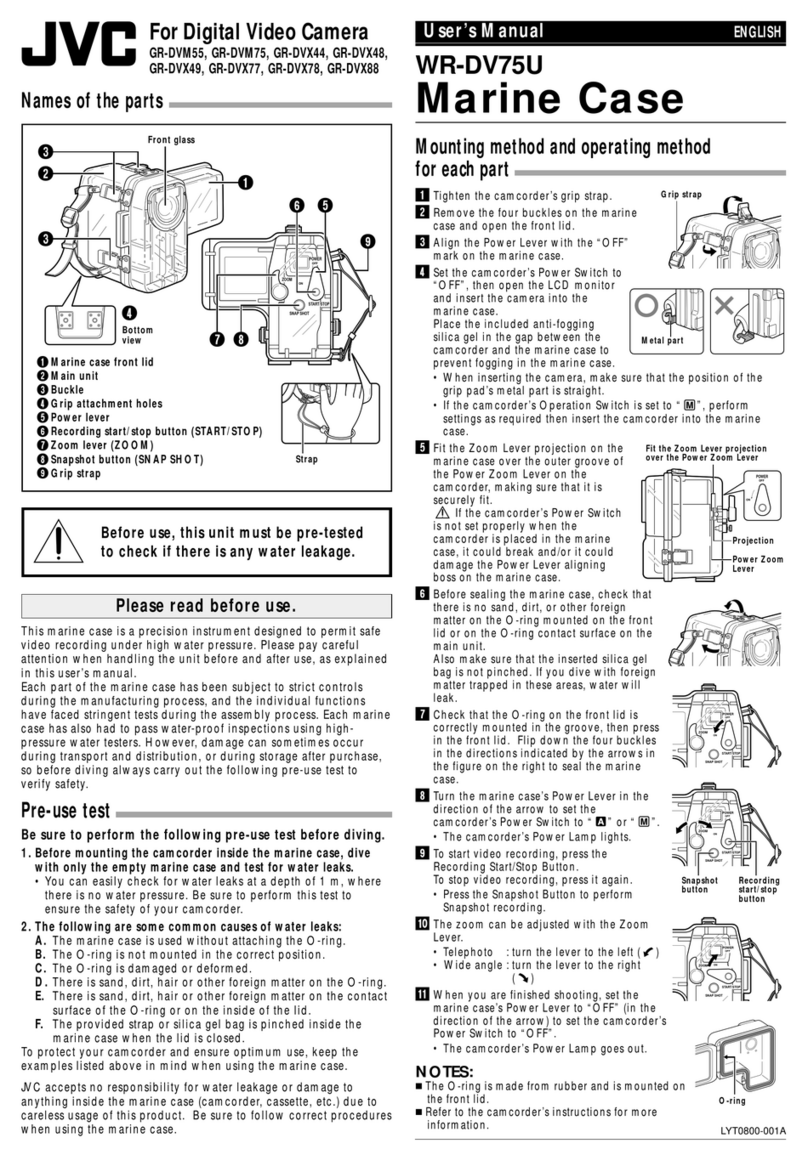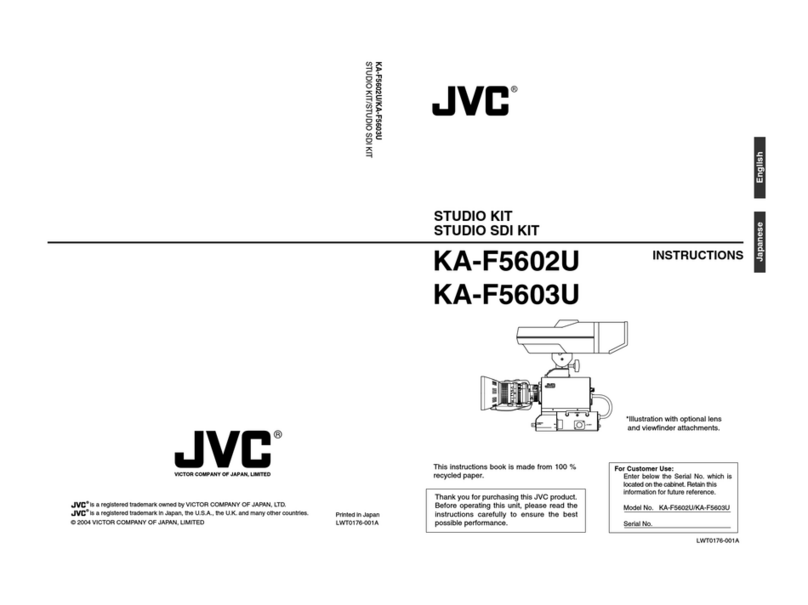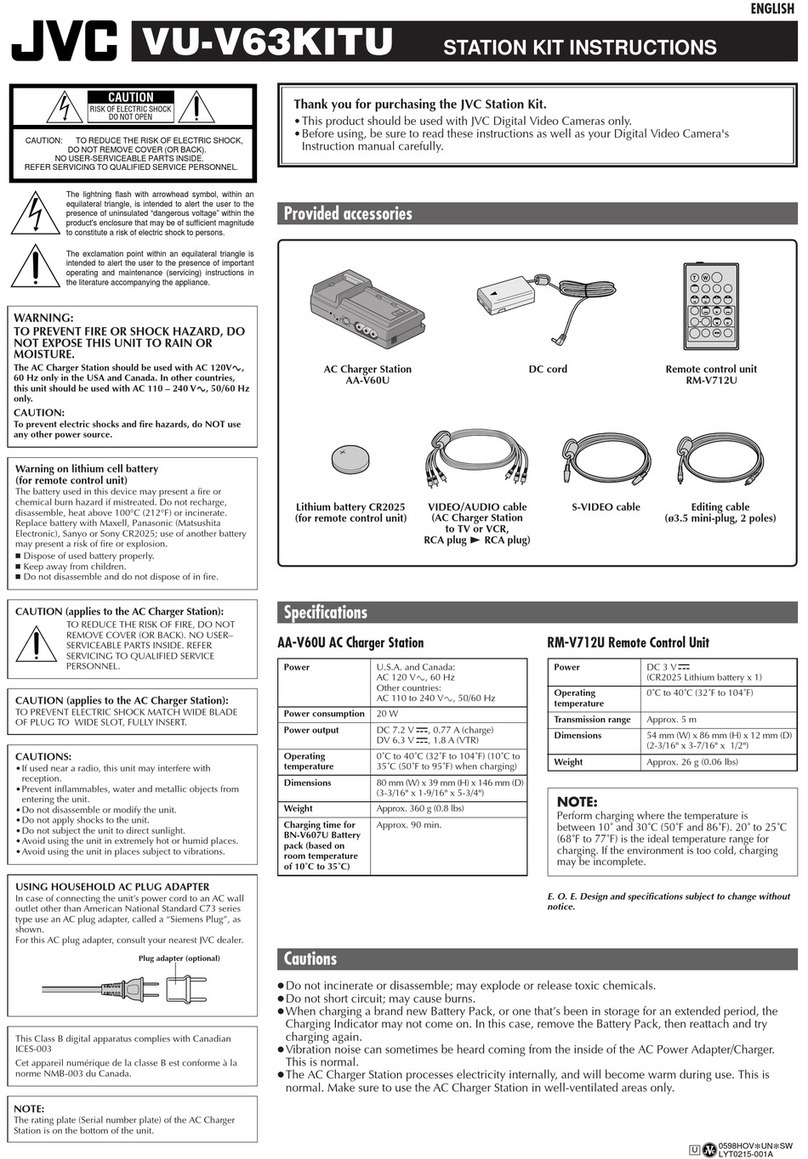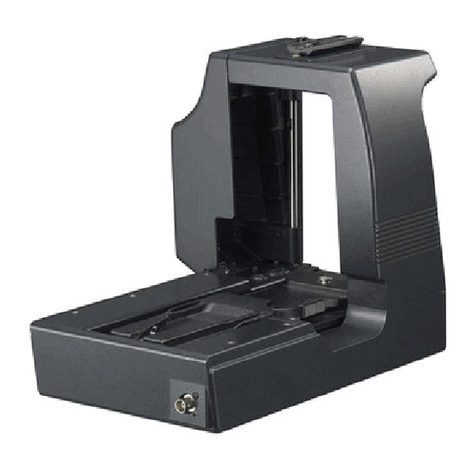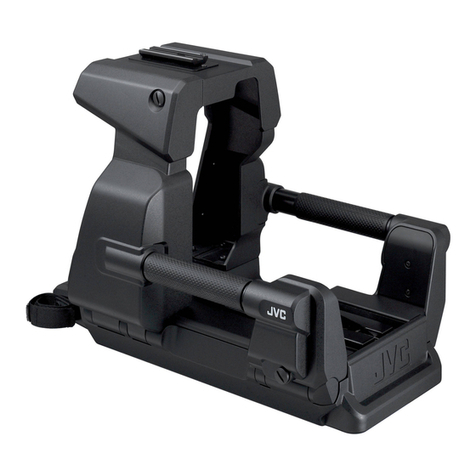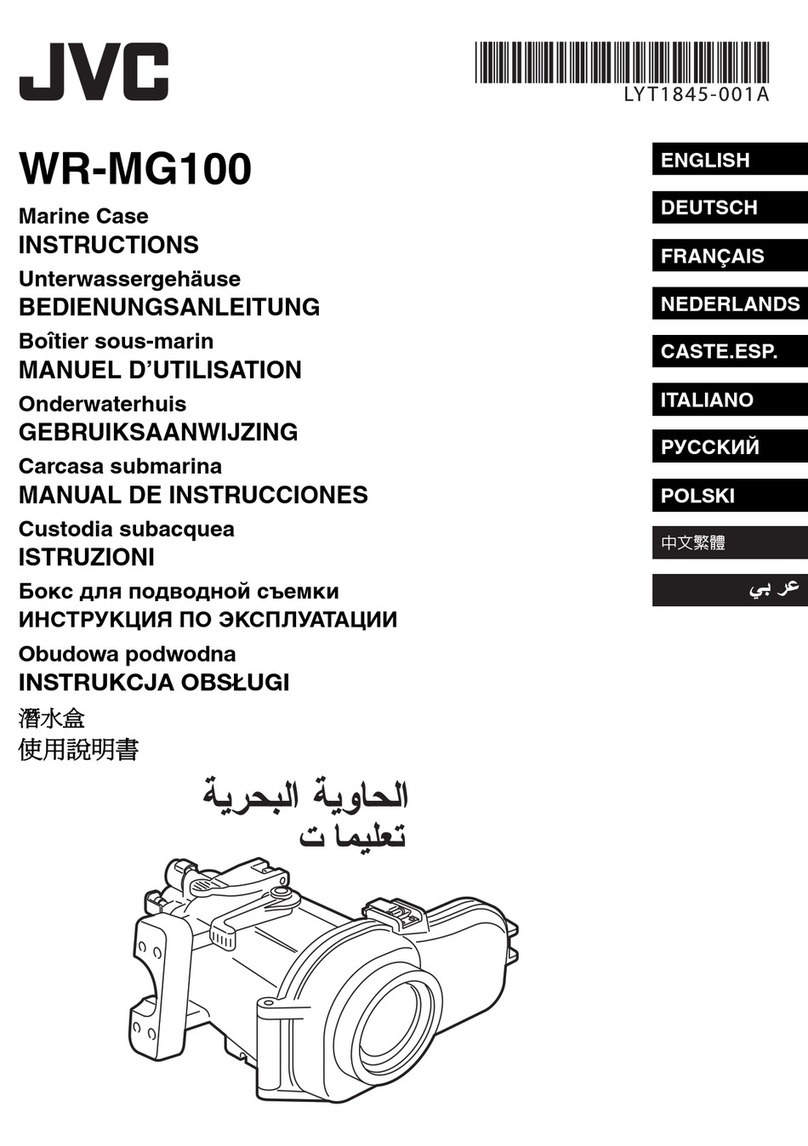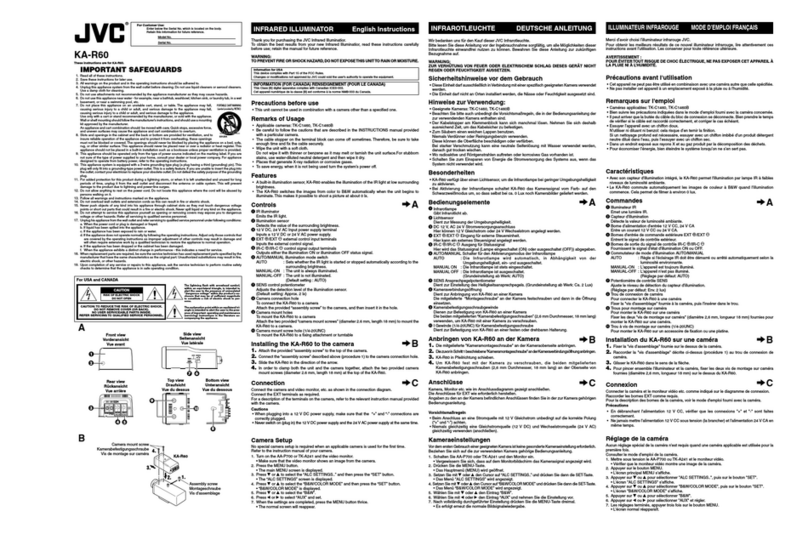
User’s Manual
ENGLISH
LNT0063-001A©2006 Victor Company of Japan, Limited
T W
ZOOM
WR-MG77
POWER
START/STOP
START/STOP
9
768
Name of each part
@Remove the O-ring from the lid section and wipe off any salt, sand, and
other foreign matter. In the same manner, wipe off any adhering foreign
matter from the groove into which the O-ring was fit and from the main
unit of the marine case where the O-ring contacted it. When removing
the O-ring from the groove, use the supplied plectrum to avoid
damaging the O-ring when you remove it.
#Since the marine case is made of polycarbonate resin, handle it
carefully. In particular, it can be easily scratched by rocks, etc. at the
shooting site and may be damaged if it is dropped or otherwise subject
to shock. When going to the shooting site by car, ship, train, or plane,
avoid transporting the camcorder in the marine case. If you take
adequate handling precautions, however, there should be no problem
in transporting the camcorder in the marine case for a short distance,
for example from the target site to the diving site.
$Avoid removing any parts other than those indicated in the user’s
manual, altering the marine case, or using any parts other than those
specified. If any problems occur, please consult the store of purchase.
%The appearance and specifications of this unit are subject to change
without prior notice.
Minimum storage period of repair parts for maintaining
performance
JVC stores repair parts for maintaining performance for five years after the
end of production. Parts for maintaining performance are essential parts to
maintain the functioning of the machine.
Main specifications
Maximum pressure Water depth up to 30 meters
Power knob ON/OFF
Recording start/stop START/STOP
and snapshot
Zoom ZOOM
Buoyancy +400 g (with the camcorder inserted and the
supplied battery pack attached)
Main unit dimensions 226 mm x 191 mm x 128 mm
(W x D x H)
Main unit weight Approx. 745 g
Applicable model GZ-MG21, GZ-MG22, GZ-MG24,
GZ-MG26, GZ-MG27, GZ-MG31,
GZ-MG36, GZ-MG37, GZ-MG39,
GZ-MG67, GZ-MG77,
Accessories • Maintenance kit (glass cleaner agent
(for anti-fogging), cleaner agent (for
removing dirt), silicon grease, silicon
cloth, anti-fogging silica gel, paper, cotton
swabs, O-ring, strap, plectrum, screw
key, buckle opener)
Usage precautions
1Never use any of the following chemicals for cleaning, rustproofing, fog
prevention, repair, or other purposes.
1) Do not clean the marine case with alcohol, gasoline, paint thinner,
or other volatile organic solvents, chemical cleaners or similar
agents. (Pure water or lukewarm water is adequate for cleaning.)
2) Do not use rustproofing agents or the like on metal parts. (Stainless
steel and aluminum are used for all metal parts, so pure water is
adequate for cleaning.)
3) Do not use commercially available anti-fogging agents. (Always use
the fogging agent that came with the marine case.)
4) Do not use any silicon grease other than that specified for the O-
ring. (Always use the silicon grease that came with the marine
case.)
5) Do not use any adhesives for repairs, etc. (If any repairs are
necessary, please consult the store of purchase.)
Direct or indirect use (vaporized chemicals) of any of the above
chemicals on the marine case can cause cracks when the marine
case is placed under high pressure.
2Exercise caution, as this marine case is a completely airtight structure.
If it is left exposed to direct sunlight, or in a car, ship, or on the beach,
the internal temperature can climb extremely high, which may cause
the camcorder inside to stop working properly.
3Do not use the glass cleaner or cleaner for any purpose other than
cleaning the front glass.
4If the camcorder is sealed inside the marine case in an area where the
humidity and temperature are high, diving will make the humidity
trapped inside the marine case cool down, causing condensation to
form and the glass surface to become fogged. It is recommended that
you insert the camcorder into the marine case in an area where the
humidity is low and the temperature is close to that of the water where
you will be diving. If a piece of aluminum foil is cut to approx. 50 cm2
and is inserted into the glass part of the marine case, fog inside the
marine case will adhere to the aluminum foil, as its heat conductivity is
higher than that of glass. This is an effective way to quickly reduce fog
inside the marine case.
5Do not open or close the case in areas where it may be subjected to
water spray or sand.
6If you must open the marine case at the diving site in order to replace
the battery or SD card, observe the precautions below.
1) Select a location safe from water spray and sand.
2) Completely wipe off any water between the main unit and the lid
section of the main case and on the buckles. Thoroughly dry off any
water remaining on the marine case with a dry cloth.
3) When removing the buckles and opening the lid section, be careful
that no water drips from your hair or body into the marine case.
4) In order to avoid touching the camcorder with hands that have salt
water on them, place a towel dampened with pure water in a plastic
bag beforehand and use it to wipe any salt off your hands and
fingers before touching the camcorder.
7Do not throw the marine case into the water.
8After use, wash off adequately with pure water as soon as possible. If
the marine case has been used in salt water, soaking the marine case
in pure water for a while is an effective way to remove salt.
Be sure to operate all levers and buttons to wash off any salt in the
grooves. If any salt remains, it will dry out and crystallize. This could
result in water leakage.
9After washing, wipe off any water with a dry cloth free of salt to
completely dry off the marine case. However, do not expose the marine
case to direct sunlight in order to dry it. This can cause discoloration
and breakage of the marine case, and can speed up deterioration of
the O-ring.
0Wipe the inside of the marine case with just dry cloth. Maintain the
transparency of the front glass by wiping the inside face with a silicon
cloth or the like moistened with cleaner agent.
!If the front glass is left dirty, it may cause fogging.
Please read before use.
This marine case is a precision instrument designed to permit safe video
recording under high water pressure. Please pay careful attention when
handling the unit before and after use, as explained in this user’s manual.
Each part of the marine case has been subject to strict controls during the
manufacturing process, and the individual functions have faced stringent
tests during the assembly process. Each marine case has also had to pass
waterproof inspections using high-pressure water testers. However,
damage can sometimes occur during transport and distribution, or during
storage after purchase, so before diving always carry out the following pre-
use test to verify safety.
Pre-use test
Be sure to perform the following pre-use test before diving.
1. Before mounting the camcorder inside the marine case, dive with
onlytheemptymarinecaseandtestforwaterleaks.
Check for leaks at a depth of 2 m where there is no water pressure.
Allow 5 or 6 minutes to ensure there are no leaks. Be sure to perform
this test to ensure the safety of your camcorder.
2. The following are some common causes of water leaks:
A. The marine case is used without attaching the O-ring.
B.The O-ring is not mounted in the correct position.
C.The O-ring is damaged or deformed.
D. There is sand, dirt, hair or other foreign matter on the O-ring.
E.There is sand, dirt, hair or other foreign matter on the contact surface
of the O-ring or on the inside of the lid.
F. The provided strap or silica gel bag is pinched inside the marine case
when the lid is closed.
3. Check that there are no scratches or cracks on the marine case
everytimeyouuseit.
The marine case must withstand water pressure with use. Repeated
exposure to pressure eventually leads to material fatigue, which may
result in damage of the marine case. Every time you use the marine
case, check in advance that there are no scratches or cracks. If you
frequently use the marine case, be sure to ask for maintenance at the
store of purchase. (There is a charge for maintenance.)
To protect your camcorder and ensure optimum use, keep the examples
listed above in mind when using the marine case.
JVC accepts no responsibility for water leakage or damage to anything
inside the marine case (camcorder, SD card, etc.) due to careless usage of
this product. Be sure to follow correct procedures when using the marine
case.
1Main unit
2Filter mount ring
3Buckles
4Marine case front lid
5Handgrip attachment holes
Before use, this unit must be pre-tested
to check if there is any water leakage.
WR-MG77 Marine Case
6Zoom lever (ZOOM)
7Power knob (POWER)
8Recording start/stop and snapshot button
9Grip
O-ring
Plectrum Front glass
Bottomview Strap
123
4
5
33
